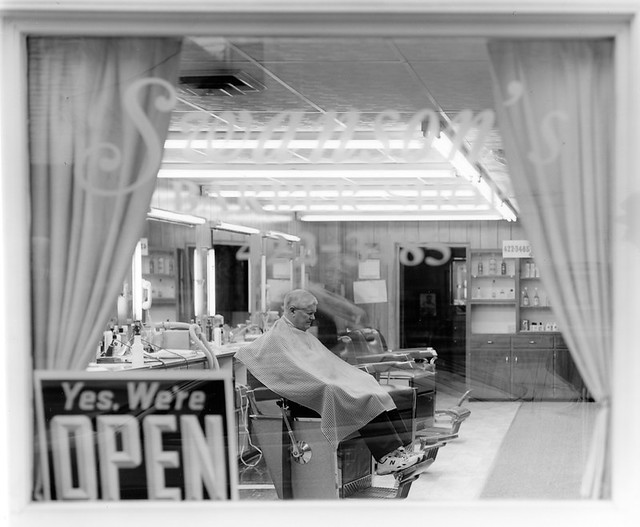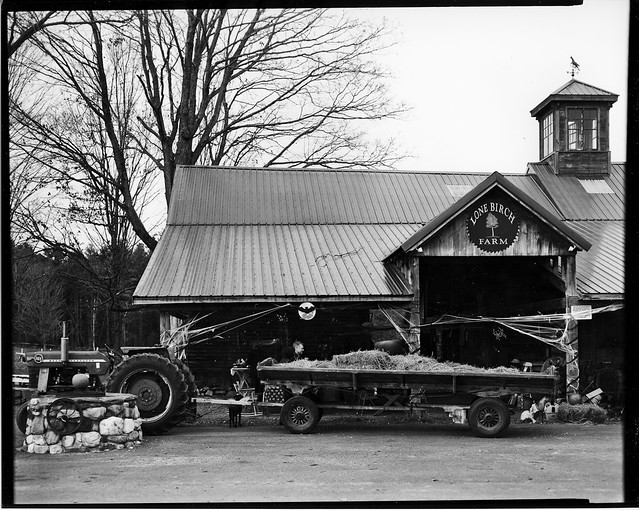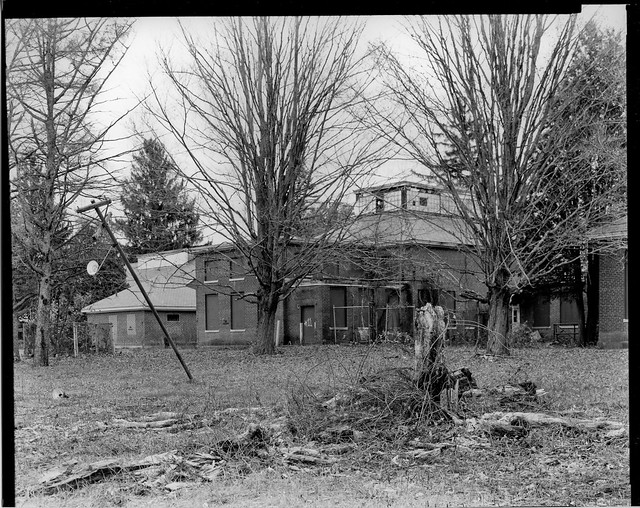The 52 Project, Week 32: Hasselroids & Polablads
 Tuesday, March 29, 2011 at 7:27PM
Tuesday, March 29, 2011 at 7:27PM  Pro tip: get a GOOD used Polaroid back.
Pro tip: get a GOOD used Polaroid back.
As little as 8-10 years ago, when you were going to take a picture that needed to be absolutely, positively, sharp and well exposed, you couldn't look at the back of your camera (also known as "chimping"), you needed to take a Polaroid. Not the boxy, point and shoot style, integral film eating Polaroid 600 that we all know and love, but one made to take pack film (click the link for more info). On my Hasselblad, taking a test exposure is as simple as attaching the film back, taking the picture, and pulling out the instant film tabs. If you've never taken an instant picture with pack films before, I highly reccomend getting an old Polaroid Land Camera or Polaroid back and trying it. It's a thrill to peel apart the positive from the negative, held together by a thin layer of gooey, unused reagent (dont' eat this please). This is infinitely more fun than looking at the back of some glare-ridden LCD screen.
Save the model of camera used, this video perfectly illustrates the process of using pack film in a Polaroid back to proof your exposure:
Now, some of you that follow the news may be wondering, "where the heck can I get Polaroid film? Didn't they stop making film?"
The truth of the matter is yes, Polaroid no longer makes their signature product, Polaroid 100 series pack films. Thankfully, the guys over at Fujifilm in Japan have come up with their own phenomenal pack films, Fuji FP-100C and FP-3000B. The 100 speed is lower speed, vivid color film, and the 3000 is an incredibly fast B&W film. Each are great under a variety of condtions, and include self-terminating development. You can literally shoot all day, and peel your film when you get home.
Considering the quick nature of instant photography, lessons can be learned quickly and to little cost to the user, leaving little for me to discuss in the typical good, bad, and ugly format. Instead, we'll talk about some things that can go wrong with your instant film, with examples from yours truly.
Lesson 1: Light Leaks - never, ever open up your pack of film after it has been loaded
Lesson 2: Overexposing is the Devil! - instant film responds to overexposure much like slide film and digital, by crying, blowing out highlights, and fogging your positive. >__<
Lesson 3: Don't Expect Expired Film to Perform - if it's more than 4 years old and hasn't been cold-stored, consider any kind of image a miracle. The images below are Polaroid 669 film from 1992!
 Reagent is a liquid, it can dry up and do this.
Reagent is a liquid, it can dry up and do this. The background is more yellow than black.
The background is more yellow than black.
 Sometimes you get really lucky. ^__^
Sometimes you get really lucky. ^__^
And that pretty much does it for this week. Instant photography is fun stuff, and the only way it'll keep being made is if somebody is out there to shoot it. So pick up that Polaroid Land Camera or Polaroid back today and get shooting!
Next Week: More fun times with the Hasselblad.
 500C,
500C,  film photography,
film photography,  fp 100c,
fp 100c,  fujifilm,
fujifilm,  hasselblad,
hasselblad,  instant film,
instant film,  pack film,
pack film,  peel apart film,
peel apart film,  polaroid,
polaroid,  square format in
square format in  52 Project,
52 Project,  Photography
Photography 







